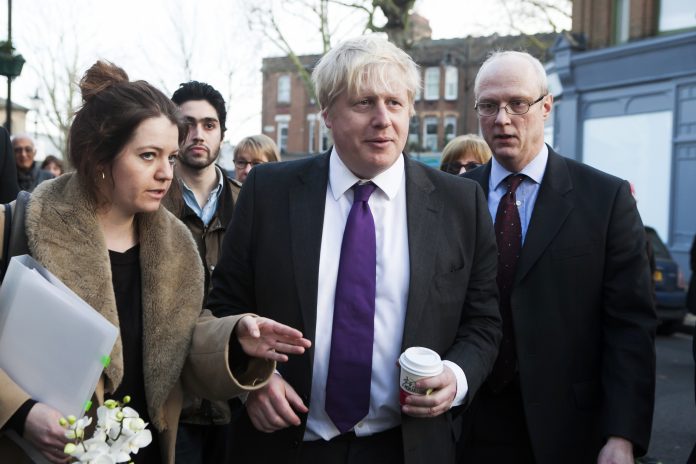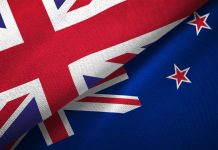Here, we look at who made it into PM Johnson’s chosen few after the Cabinet reshuffle
The big three:
1. Chancellor: Sajid Javid
Sajid Javid is a Eurosceptic Remainer, who is the MP for Bromsgrove since 2010.
He also ran for Conservative leader, finishing in fourth place. He did not immediately endorse Boris Johnson.
He was the former Home Secretary under Theresa May, dealing prominently with the Shamima Begum case, in which he denied her asylum in the UK. He was instated after Amber Rudd resigned from the post after the Windrush scandal.
He is a second-generation Pakistani-Muslim immigrant, who regularly speaks on issues concerning minorities.
He was ascending politically, having occupied posts such as Secretary of State for Housing, Communities and Local Government, and Minister for Equality and Secretary of State for Business, Innovation and Skills.
2. Home Secretary: Priti Patel
She has been the MP for Witham since 2010 and campaigned as a hardline-Leaver.
She has supported Boris Johnson, who chose her despite her record of being fired from the Theresa May Cabinet. This happened in 2017 due to Patel holding illegal meetings with Israeli officials, whilst on a “holiday” during her time as International Development secretary in 2016-2017.
She is described as a ‘Thatcherite’, on the ideological hard-right of the party. She regularly condemns “tribalisms” and divisions in the Conservative party.
Priti Patel is in support of the ‘hostile environment’ immigration approach, voting consistently against improving conditions for asylum-seekers and refugees, in support of mass surveillance and in favour of combining fire and police services.
3. Foreign Secretary: Dominic Raab
Dominic Raab has been the MP for Esher and Walton since 2010, and was an active Leaver.
He also ran for Conservative leader, finishing in 6th place and immediately endorsing Boris Johnson.
On Brexit he said:
“We’ll be better off if we’re freed up to trade more energetically with the growth markets like Latin America and Asia.”
He was promoted to his first Cabinet role in 2018 by May, which was Secretary of State for Exiting the European Union after David Davis resigns. Raab was in disagreement with the Draft Withdrawal Agreement he helped negotiate, resigning from this post in November 2018.
He opposes the termination of a relationship between Saudi Arabia and the UK, stating “thousands of jobs” would be lost if the UK responded to the murder of Jamal Khashoggi by Saudi Arabian authorities.
He regularly voted for airstrikes in Syria and Iraq, but unlike other Conservative members, voted in favour of LGBT rights and a smoking ban.
Other key players in the new cabinet:
1. Defence Secretary: Ben Wallace
Ben Wallace has been Conservative MP for Wyre and Preston North since 2005, formerly in the military. He was previously Minister of State for Security and Economy Crime.
He was a quiet Remainer, supporting the concept of the EU. He was in a political scandal when he supported accusations that Jeremy Corbyn worked with communist spies in the 1980s.
2. International Trade Secretary: Liz Truss
Liz Truss has been the MP for South West Norfolk since 2010, and campaigned to Remain. She was formerly a Liberal Democrat during in her university of Oxford era. She has been Chief Secretary to the Treasury since 2017.
3. Health and Social Care Secretary: Matt Hancock
Matt Hancock has been the MP for West Suffolk since 2010, and campaigned to Remain. He ran for leadership but dropped out after the first round, without enough votes to continue.
In 2019 April, Hancock was criticized for allowing 21 NHS contracts worth £127 million to be tendered, despite saying that he would allow “no privatization on my watch.”
4. Environment Secretary: Theresa Villiers
Theresa Villiers has been the MP for Chipping Barnet since 2005, and campaigned to Leave. She supported Boris Johnson from the beginning. Formerly the Secretary for Northern Ireland, Theresa Villiers has also been an MEP since 1999.
She said that the new PM offers “some hope and excitement about what politics can deliver for them”.
5. Education Secretary: Gavin Williamson
Gavin Williamson has been the MP for South Staffordshire since 2010, and campaigned to Remain.
He helped with Boris Johnson’s leadership campaign, using the expertise he has from being a ministerial aide to David Cameron.
He criticised Theresa May as “naïve” for meeting and talking with Labour to try and secure a vote on the Brexit deal. Gavin Williamson was fired by the former PM in May due to the leaked information from the National Security Council about the role of Chinese firm Huawei and 5G.
Williamson insisted he was not responsible.
He was formerly Chief Whip for David Cameron.
6. Work and Pensions; Women and Equalities Secretary: Amber Rudd
Amber Rudd has been the MP for Hastings and Rye since 2010, and campaigned to Remain.
She believed that the party wanted a Brexiteer leader and bowed out of the competition, supporting Jeremy Hunt.
She resigned last year over the Windrush scandal, which led to many immigrants being falsely labelled as illegal. After seven months, she was back in the Cabinet as Minister of Work and Pensions.
7. International Development Secretary: Alok Sharma
Alok Sharma has been the MP for Reading West since 2010, and campaigned for Remain.
He has expressively supported Boris Johnson, suggesting he is the only leadership candidate who can defeat Jeremy Corbyn and Nigel Farage. His appointment, in addition to Priti Patel, is one of the reasons that this Cabinet is being self-described as the most diverse to date.
Sharma said he is prepared to leave without a deal if the government do not make the 31st October deadline.











